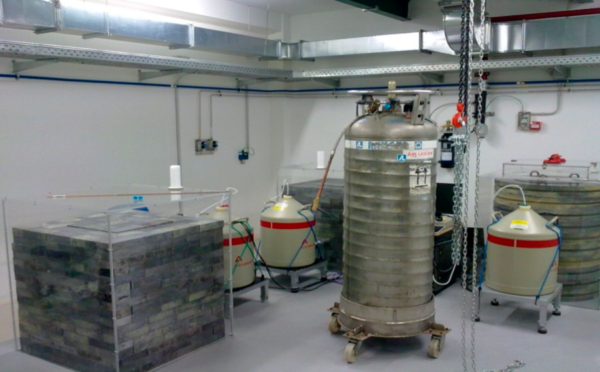Very low background measurements for Super-Kamiokande
Responsible Institute: University Autónoma, Madrid
Supporting Institutes: Institute for Cosmic Ray Research, Tokyo; Institute for the Physics and Mathematics of the Universe, Tokyo; University California Irvine
Super-Kamiokande (SK) is the world’s most powerful scientific apparatus for proton decay and neutrino physics. It operates in the Kamioka underground observatory in Japan. SK discovered neutrino oscillations in neutrinos from cosmic rays collisions in the atmosphere, contributed to solve the solar neutrino problem, measured elements of the neutrino mixing, and observed neutrino oscillations in an artificial neutrino beam produced at 230 km distance for the first time (K2K experiment). It is taking data on a neutrino beam from the JPARK Laboratory. SK currently provides the world’s best limit on proton decay. SK pioneered the field of neutrino astronomy, giving, in particular, the most restrictive upper limit on the ubiquitous neutrinos originated in the past Supernova (Diffuse Supernova Neutrino Background: DSNB) explosions.
SK uses the water-Cherenkov technique, which allows to instrument large amounts of active mass with a reliable, understood and low cost technology. Despite of its success, the technology has, however, a drawback: its inability to detect low energy neutrons, which would be extremely important to “tag” the antineutrino induced reaction ve + p → e+ + n .
The SK Collaboration has setup a strong R&D program towards the high efficiency detection of neutrons, by solving in the water a gadolinium (Gd) salt. The Gd nuclei have a large probability to capture the neutron, which is followed by the emission of energetic g-rays that are efficiently detected by SK. This technique can result in: 1) the discovery of the DSNB and 2) a high-statistics measurement of the anti-neutrino spectrum from Japan’s nuclear power reactors allowing accurate measurement of some of the neutrino parameters.
SUPERK-GD deals with the potential drawback of this technique. Once the Gd-compound is diluted in SK (a non reversible operation), not only the searched for neutrons will become visible, but also those produced by radioactive traces possibly present in the materials. This neutron background, presently invisible to SK, must be known as precisely as possible. SUPERK-GD uses the LSC Low
Background Germanium Detectors facility for a complete programme of radioactivity measurements of 1) initially, samples of Gd-compound, to define the production process, 2) in production, samples of the Gd batches, to test the quality of the production; 3) samples of selected materials from those forming the SK detector.


